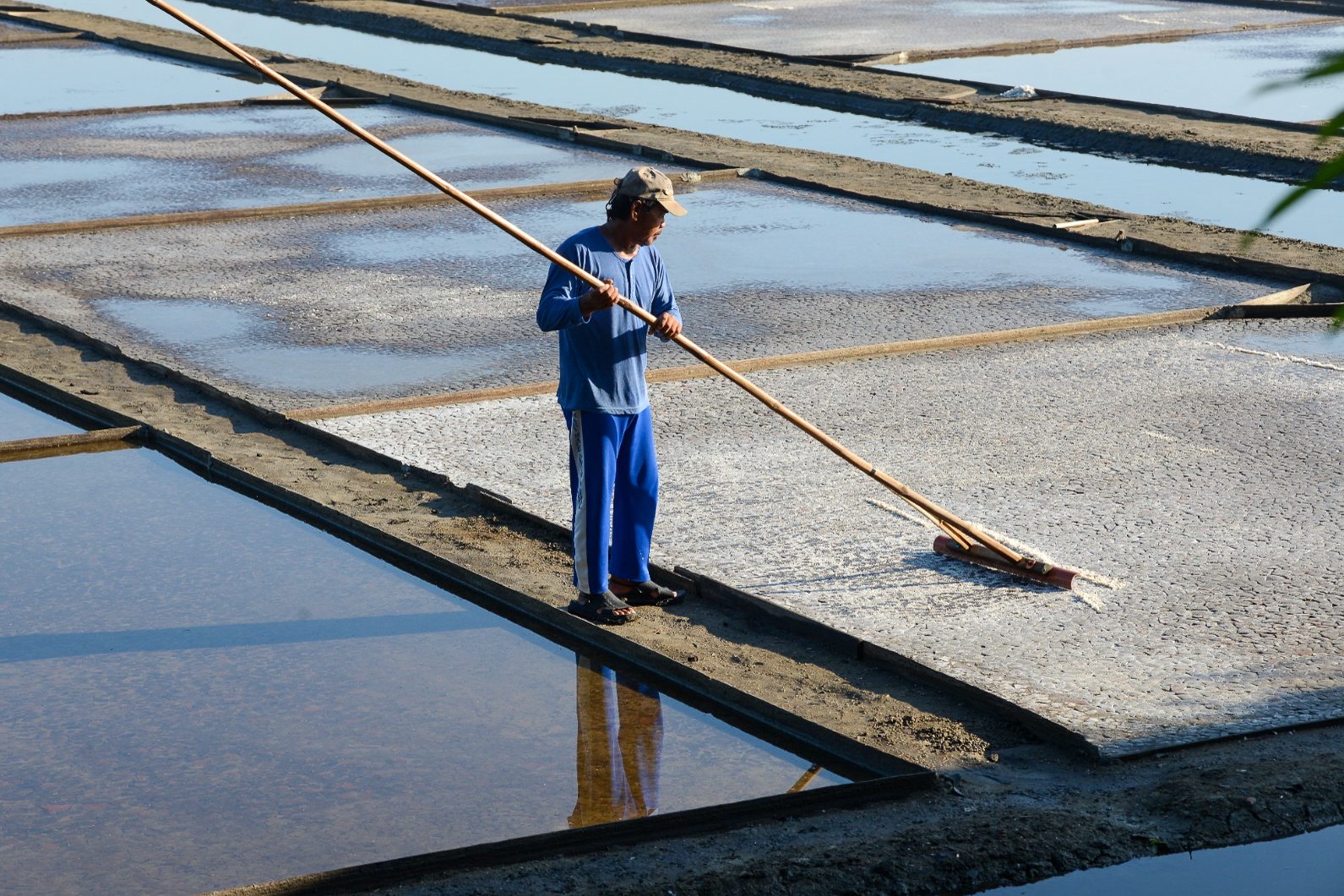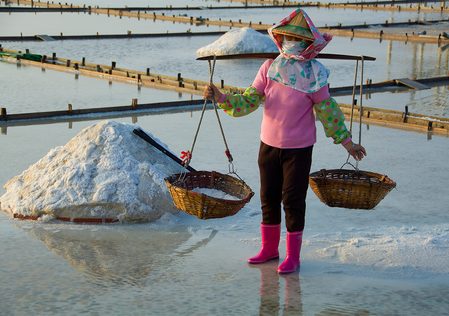SUMMARY
This is AI generated summarization, which may have errors. For context, always refer to the full article.

MANILA, Philippines – Under the Fisheries Code of 1998, the Department of Environment and Natural Resources’ (DENR) has to restore abandoned fish ponds “in their original mangrove state,” once the Bureau of Fisheries and Aquatic Resources (BFAR) reverts these back to the agency.
But in light of a new law, Republic Act 11985 or the Philippine Salt Industry Development Act, the DENR will now assess whether certain abandoned fish ponds are to be restored back as mangroves forests or to designate them as potential salt production areas.
“It will be based on a thorough and careful evaluation on what we’ll do with the abandoned fish ponds,” Environment Undersecretary Jonas Leones told Rappler in Filipino.
Abandoned fish ponds are public lands transferred by the DENR to BFAR for fish pond development, but have been left idle by the tenants. These areas are enclosed by dikes, bare of the mangroves they used to have.
Leones said conversion of abandoned fish ponds to salt farms is “not automatic” and that they will be adopting “beneficial use of the area.”
The environment undersecretary said the salinity or salt content of abandoned fish ponds is a factor in deciding how these will be restored.
Leones said that fish ponds with high salinity will be considered for salt production. Otherwise, he added, mangroves will not be able to grow there because of harsh environment.
“But if the area has low salinity…[it can be converted] as a mangrove area,” Leones explained.
Aside from abandoned fish ponds, the DENR will be scouting public lands and municipal waters to map and identify potential salt production areas six months after RA 11985 takes effect in April.
Together with concerned bureaus and attached agency National Mapping and Resource Information Authority, the environment department will prioritize public lands in Ilocos Norte, Ilocos Sur, La Union, Pangasinan, Zambales, Bataan, Occidental Mindoro, Oriental Mindoro, Palawan, Marinduque, Quezon Province, Misamis Oriental, and Antique.
Meanwhile, Leones assured the public that salt production in municipal waters would not impede the livelihood of small fisherfolk, as production will only take place near the coast.
The Philippines imports 93% of salt, ironic for a country with one of the longest coastlines in the world. RA 11985 aims to make the Philippines salt self-sufficient and a net exporter of salt by expanding the number of farms, promoting public and private investments, and ensuring technical and financial support to industry players.
Restoring back to original state
Abandoned fish ponds are where mangroves used to be, marine scientist and mangrove expert Jurgenne Primavera told Rappler in a previous interview.
Seven members of the National Academy of Science and Technology forwarded their critique to the DENR in January, before President Ferdinand Marcos Jr. signed the law.
In their critique, they said that the Bureau of Fisheries and Aquatic Resources (BFAR) must revert back the abandoned, unused and underutilized fish ponds to the DENR so these can be “regenerated back to mangroves, as mandated by law.”
The scientists emphasized that mangroves, when regenerated from abandoned ponds, can provide storm protection and carbon sequestration. The restored mangroves’ value “would be far greater than any salt production, as they protect human lives,” the critique read.
The law seeking to revitalize the salt industry said that fish pond lease agreements previously issued by the BFAR “may now include salt production as among the valid activities that may be undertaken by the leaseholder.”
If fish ponds will be returned to their original state, Primavera said she recommends restoring tidal flow before evaluating the level of salinity inside the pond.
“[T]he first step of reverting abandoned ponds to mangroves is to restore hydrology or tidal flow (and therefore seawater salinity) by breaking the dikes,” Primavera told Rappler in a message.
Primavera said this is a “quick and inexpensive step” because only a portion of the dike should be broken to allow tidal flow during spring tide.
According to the scientists, government should focus more on expanding capacity of desalination facilities. This would solve the issue of brine discharge, expansion of salt farms into critical habitats, and regeneration of mangroves. – Rappler.com
Add a comment
How does this make you feel?




![[ANALYSIS] How one company boosts farmer productivity inside the farm gate](https://www.rappler.com/tachyon/2024/06/bioprime-farmgate-farmer-productivity-boost.jpg?resize=257%2C257&crop=465px%2C0px%2C1080px%2C1080px)











![[OPINION] Grading Marcos admin’s performance on the climate agenda](https://www.rappler.com/tachyon/2024/06/grading-marcos-performance-climate-agenda-june-25-2025.jpg?resize=257%2C257&crop=441px%2C0px%2C1080px%2C1080px)





There are no comments yet. Add your comment to start the conversation.